A Meditation In Berlin

Neue Wache, 2023 © Meriem Chabani
In the summer of 2023, I came looking for the sacred in Berlin. Curious of the fact that the German capital was the site of the future House of One, a shared ground of worship for the three main monotheistic religions, I wanted to investigate how faith intertwined with the fabric of the city. What forms of sacred practices had developed in formal and informal ways in the rich interwoven cultures of this European crossroad? What could we learn from their spatial expression? I was busy preparing my research itinerary, when, a couple of days before my arrival, I received news that the husband of the friend inviting me to Berlin had tragically passed.
The shock of sudden death brought back memories of loss and pain. It altered the way I could, and needed to engage with the city. I looked at the map. My eyes held onto the shape of old scars, onto the names of memorials and cemeteries. I was drawn into the sacred nature of places of remembrance.
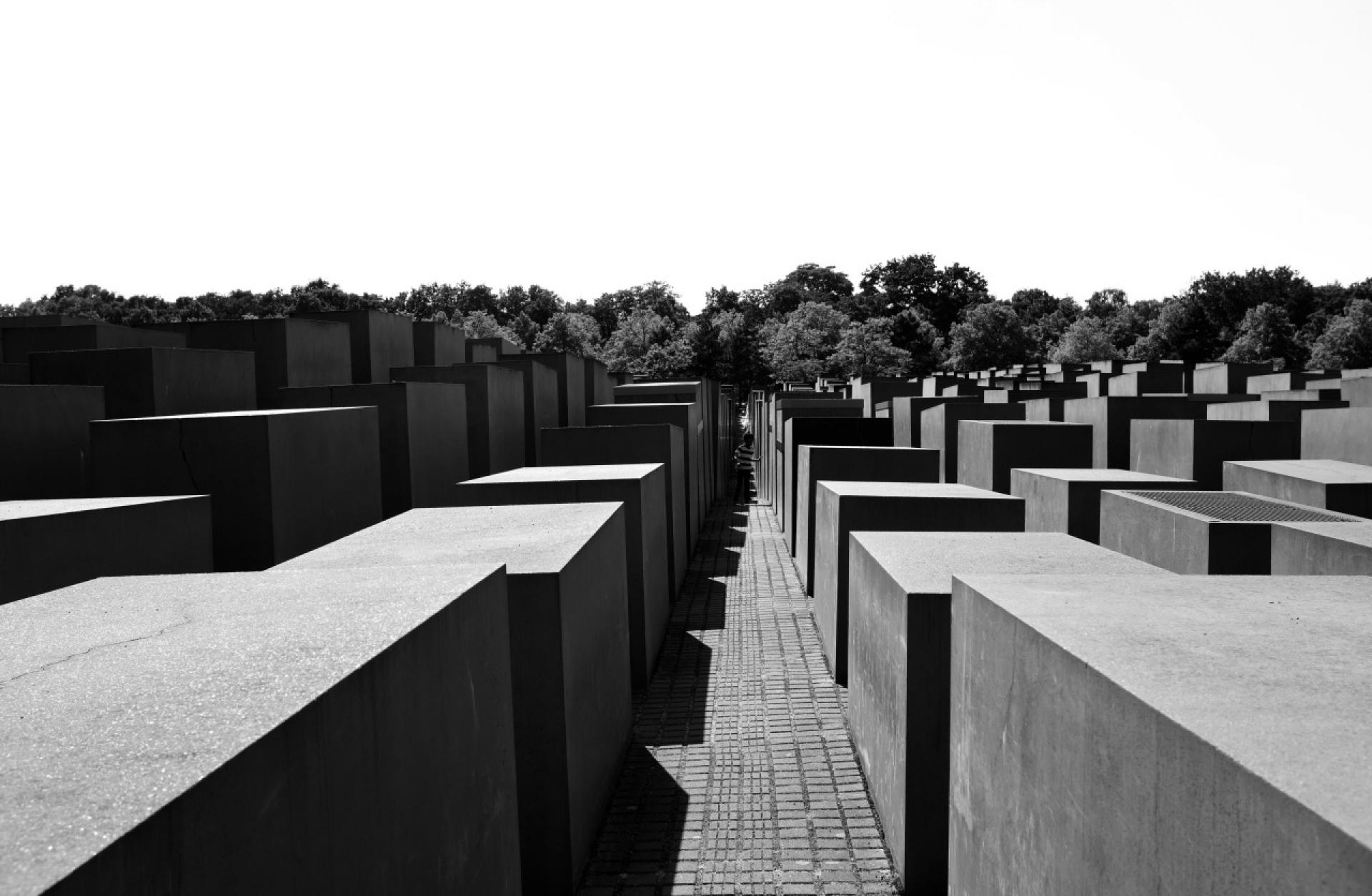
Holocaust Memorial, 2023 © Meriem Chabani
As I arrived in Berlin, I went straight to the Holocaust Memorial. Peter Eisenman and Buro Happold’s design was vivid in my mind, a powerful display that had caught my attention back when I was an architecture student. The sun was shining bright on the day of my visit, throwing stark lights and shadows on the concrete blocks. Being familiar with the architects’ design - their decision to offer uneven ground and varying block heights in order to invite reflection and unease - did not prepare me with the eerie sense of dread and sadness that I would experience. One of the main and unexpected factors of unease was the number of tourists walking the grounds alongside me. Dozens of people were talking loudly, screaming, laughing. I came across a child running, dashing through the blocks, then immediately vanishing away. Later, I saw a couple of instagramers taking selfies. The glaring sun made it hard to see properly ahead. Constantly running into strangers made me uneasy. As I went deeper and deeper into the labyrinth of stylized tombs, towering high above my own height, I was aware of a growing sensation of danger. Loud male voices echoed, and tall men would emerge suddenly, laughing, then disappear again. I left, feeling deprived of the meditation I had hoped for, from grounds that suddenly felt hostile.
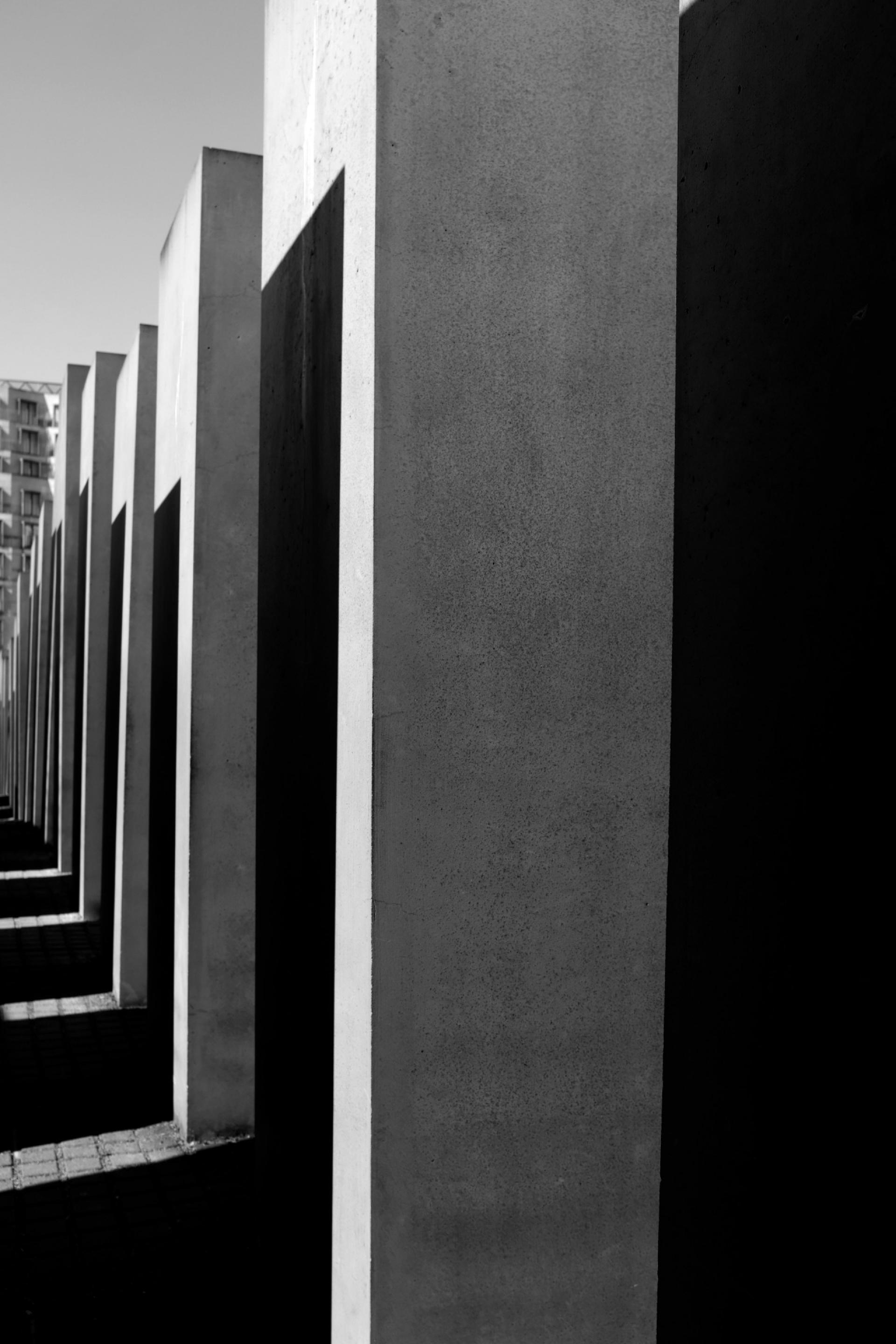
Holocaust Memorial, 2023 © Meriem Chabani
At its core, sacredness is hard to define. It is something more easily felt than described. Thinking that maybe I needed some quiet, I walked towards the Brandenburger Tor. Right in the epicenter of Berlin’s most famous tourist location, the Room of Silence (Raum der Stille) has been built to allow for a space of rest for all, for “relaxation, prayer, remembrance, meditation and contemplation”. It embodies a functionalist approach to the sacred, like the oecumenic chapels one might find in hospitals or airports. The specificity of the German language gives it a special twist, “Stille” meaning both silence and immobility. I settled on a chair inside the white room and waited. A couple was present, but left after a few minutes. I sighed and tried to relax, looking around at the furniture, and the abstract painting on the wall. Yet all I could hear was the loud jackhammers from a nearby construction site, an ongoing drum that would not stop. In the room of silence, I found no silence and no rest. Maybe I would find it elsewhere.


Raum Der Stille, 2023 © Meriem Chabani
On my way to the old Jewish Cemetery, I called my best friend and got lost. The cemetery I found instead was the St. Elisabeth-Friedhof. It is set in an open field, full of healthy trees and open lawns, with uncovered tombs, covered in grass, that made the place look like a Muslim cemetery. Mothers were walking around with babies in strollers and younger children, wandering calmly in the shade. Traces of love were scattered around, in the fresh flowers, in the decorative candles, in the words engraved in stone. I thought of the grief of my friend, and wondered what words of love he would choose. Later, I learned that the Berlin Wall once ran along the cemetery wall. The Wall did, in fact, follow the borders of cemeteries whenever it could, as my friend Fabian Saul, a long-time city expert, would later point out. Cemeteries offered open grounds, with limited demolition needed in order to erect the separation wall. The graves bore the brunt of the assault, with many being dug up, displaced or simply erased to make way for the fortified border. Upon hearing this story, I reflected on the people that had been shot on top of desecrated graves, layers upon layers of death. It sat at odds with the quiet beauty, with the children in strollers, with the apparent peace.
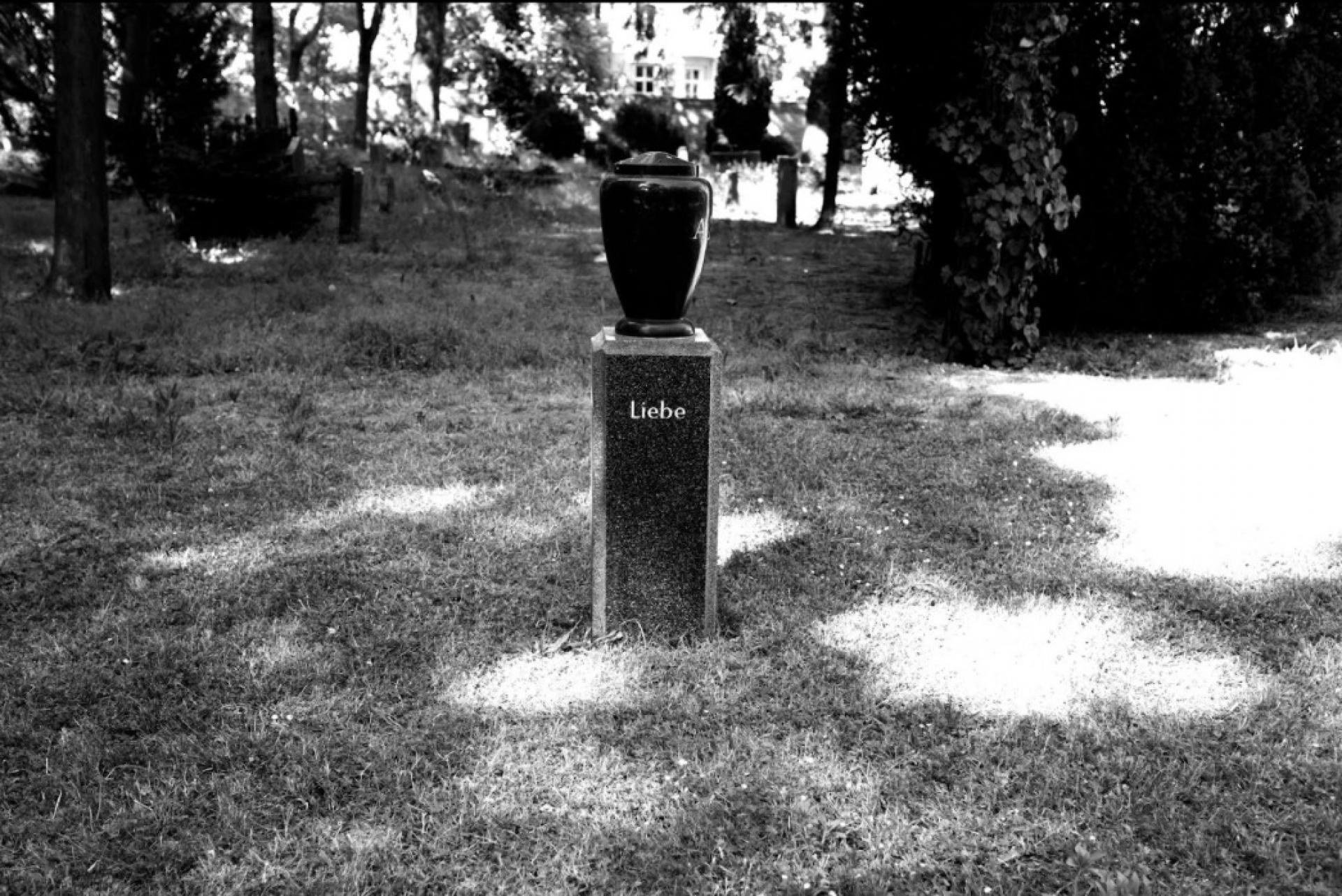
St.Elisabeth-Friedhof, 2023 © Meriem Chabani
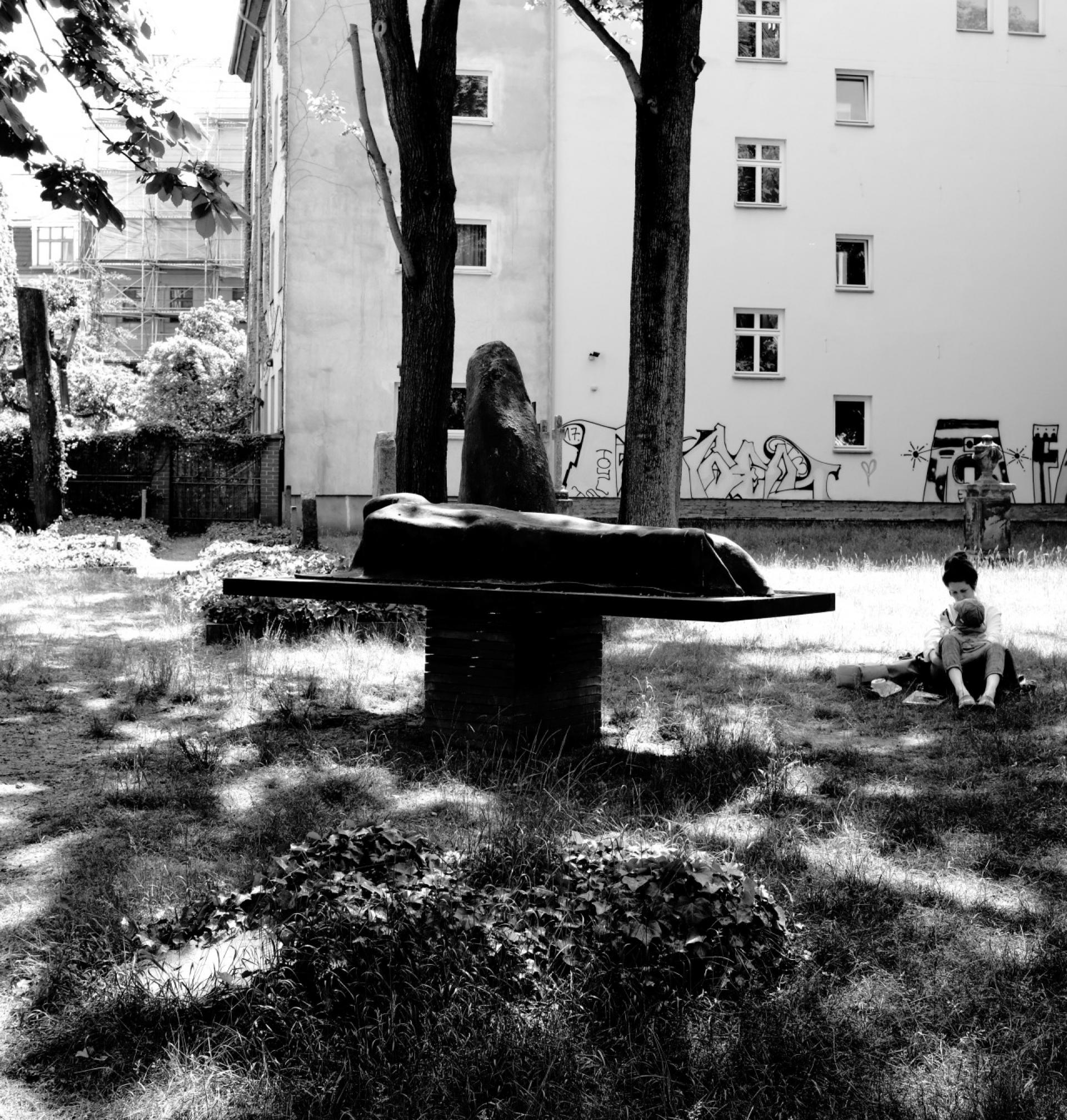
Alter Garnison Friedhof, 2023 © Meriem Chabani
Exiting the St. Elisabeth-Friedhof through the north, I found myself walking through fields of hay, gently swaying in the breeze, shimmering in the setting sun. A massive metal cross was half buried in the ground, as if freshly fallen from the sky. I had stumbled upon the Chapel of Reconciliation, built in 1999 on the grounds of an ancient church, demolished by the East German Government only four years before the fall of the Berlin Wall, which ran right by its doors. The building was blown up, the cross on the tower fell, and it was hidden by church members until the reconstruction. Berlin architects Rudolf Reitermann and Peter Sassenroth collaborated with clay specialist Martin Rauch to design the first rammed earth church in Germany. The Chapel of Reconciliation emerges from the landscape as a natural extension, in wood and clay, as if ushering the reconnection of humans to fellow humans, and humans to the land.

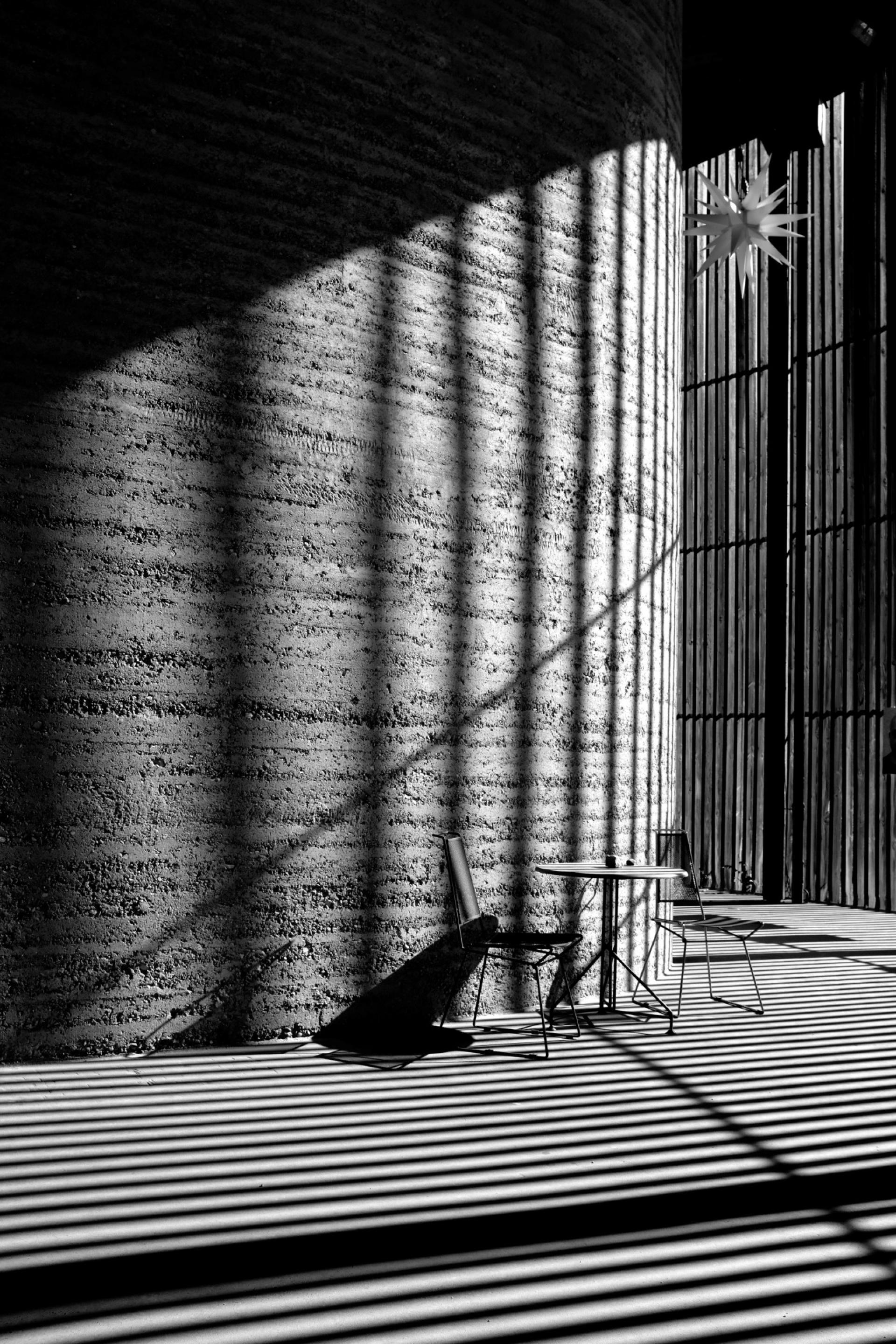
Chapel of reconciliation, 2023 © Meriem Chabani
When I told Fabian Saul, editor of Flaneur, about my quest for sacred spaces and remembrance, he took me to Koppenplatz, a small square that is host to one of the very first Holocaust memorials erected in Berlin. The memorial stands on top of a hidden burial ground, unmarked and nearly forgotten. In the 18th century, it was open to the poor, the orphans and suicides of the popular and jewish Scheunenviertel neighborhood. Today, the metal sculpture of an eerily familiar scene stands vigil in the square: the “Deserted Room” represents a table with two chairs on a stylized parquet. One of the chairs lays on the ground, as if recently fallen, a powerful evocation of the forced displacements and deportations that emptied the neighborhood of its jewish population. As we strolled through the quaint square, reflecting on its history, walking on hidden graves, Fabian described how some of his friends would always avoid this place, describing a feeling of unease that they cannot quite understand. I pondered at the intertwined layers of remembrance, at the tree roots digging in the graves of the nameless departed.

Koppenplatz, 2023 © Meriem Chabani

Große Hamburger Straße memorials, 2023 © Meriem Chabani
Walking with grief, I had seen so many places of death and destruction in Berlin, and of eerie beauty. Yet somehow, the one that struck me the most was the Memorial of the Old Jewish Cemetery in the Mitte district. It used to be the city's oldest jewish cemetery, before being destroyed in 1943 by the Gestapo. Tombstones and human remains were forcibly removed. A zigzag trench was dug through the graveyard, the bones of the dead were pulled out of the ground and the gravestones were smashed. The deliberate effort to erase the very presence of the dead from the ground, to make the earth forget, to utterly and completely obliterate the memory of the departed, was chilling. Now, the cemetery had become a memorial park, and there were no more tombstones, and apart from a few famous ones, the names were lost. I stood at the gates for a long time. For the very first time in my life, I was seeing a cemetery for a cemetery.

Old Jewish Cemetery Memorial, 2023 © Meriem Chabani
My exploration of Berlin had mainly been solitary, and it was time for community. I left for the House of the Cultures of the World - Haus der Kulturen der Welt, where I would meet my grieving friend, and fellow researchers from the LINA program. I arrived at the Water Basin,next to the temporary pavilion built by Raumlabor, with fringes that shimmered in the setting sun. In an unexpected turn of events, that very evening happened to be the re-opening of the Cultural center. Crowds of artists from Berlin and the Global South were convening under the invitation of new director Bonaventure Soh Bejeng Ndikung. The program read as “Acts of Opening Again. A Choreography of Conviviality”. Music, laughter and conversations were everywhere. Feeling both disconnected and energized by the crowd, I witnessed the rebirth of a long sleeping dream.


Raumlabor Pavilion, Haus der Kulturen der Welt, 2023 © Meriem Chabani
I found my friends by the water. We did not share a religion. But we held hands, and for the first time in my life, I led Salât El-Janaza, the prayer of the Dead.
إنّا لله و إنّا إليه راجعون

Skulpturen gegen Krieg und Gewalt, 2023 © Meriem Chabani

Meriem Chabani | Photo © Kaname Onoyama
-
by Meriem Chabani (New South) - Digital Architectuul Fellow of LINA